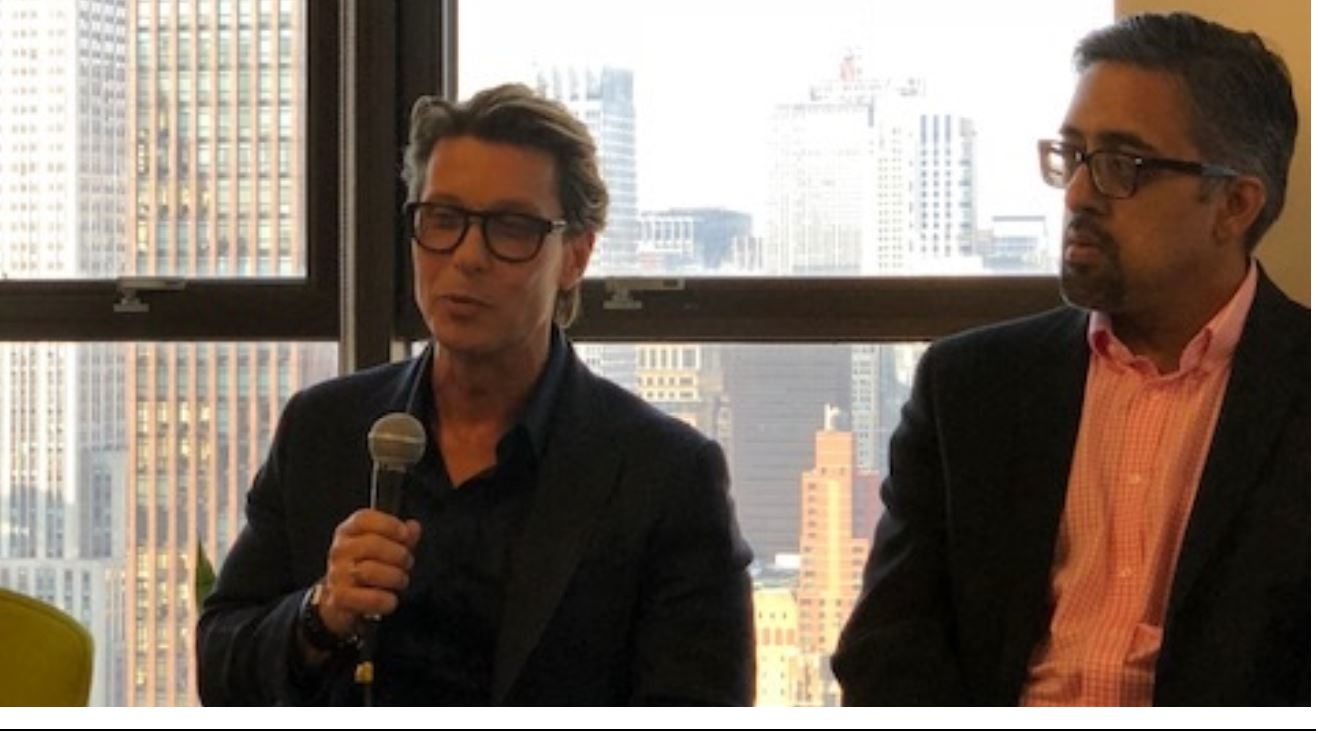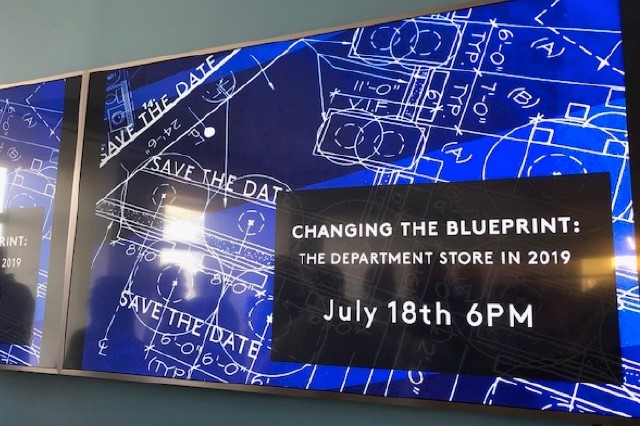Coresight Research recently attended a panel discussion hosted by RDI titled, “Changing the Blueprint: the Department Store in 2019,” with five industry experts participating. The panel discussion focused on the department store and the state of design in the industry.
Ray Ehscheid, President, RDI New York Chapter, kicked off the evening with introductions and highlighted the role of RDI. The Institute’s membership includes industry experts that span all of design including architects, graphic designers, lighting designers, interior designers, store planners, visual merchandisers, resource designers, brand strategists, educators, trade partners, educators, editors, publishers and students. RDI frequently hosts educational events and has chapters across the country. Roe Palermo, DVP Instore Presentation for Lord and Taylor and Saks Off 5th moderated the discussion. The panelists were:
- Richard Hamori, Head of Global Design and Planning, HBC
- Tony Riese, VP of Construction and Facilities, Macy’s and Bloomingdale’s
- Kedar Deshpande, Director of Financial Planning and Analysis, Nordstrom
- John Santore, Manager Operation Merchandise Presentation, Century 21

Richard Hamori, Head of Global Design and Store Planning, HBC; Kedar Deshpande, Director of Financial Planning and Analysis, Nordstrom.
Below, we highlight our top takeaways from the event:
The Saks Fifth Avenue Beauty Department Is a Success Beyond he First Floor of Department Stores, Seeing Double-Digit Growth
The Saks Fifth Avenue New York City Flagship store took a major risk and moved its beauty department off of the main floor, with great success. Richard Hamori, Head of Global Design and Planning, HBC, said that no major retailer is doing this—putting the cosmetic department not on the main floor. Hamori said that HBC ran the idea among the team internally and by all of the executives. When they proposed the idea by the beauty brands, initially they were skeptical because this had never been done before. He said that although everyone signed off on the deal, no one knew how the consumers were going to respond. Beauty sales are up double digits and the energy on the floor is up, Hamori said, “Whenever you are undertaking a new project, one can never be sure of the ROI, but if you are 70%–80% sure of the return of the investment going into a project, then I think that you are in a good place.”
The beauty move opened up doors for the company; Hamori said it was a gamble and it changed how HBC thought about beauty and how big the beauty business can be.
Moderator, Roe Palermo said that designer, Donatella Versace even commented that it was the most beautiful beauty floor that she had ever seen.
HBC Is Leveraging US Retail to Move Quickly into Europe, Building 13 Stores Within 12 Months
HBC is bringing its North American department store market expertise into the European market. The company opened 13 new stores in 12 months by renovating historic buildings in the Netherlands. The buildings were completely retrofitted, and the stores were designed to reflect the spirit in the design of local customs and culture while bringing the “future of the department store” into the spaces—to include interactive/experience spaces, pop-up areas and exposed ceilings, to name a few design highlights. The projects were delivered on time and on budget, and included 12 Hudson’s Bay stores and one Saks Off 5th store.
Hamori said that although opening 13 stores within 12 months put a lot of stress on the design team (and the executive team), he said, “the faster you can go to market the better. It gives the team the ability to learn, adjust and to react.” Everything is dynamic and figuring out how to do something better and how quickly you can react, the better.
While time was an advantage, when asked, he said that if he had to do it all over again, “more time” would also have worked better on the team’s side. He added specifically, more time would have allowed the team to add more thoughtfulness up front and figure out all of the pieces more cohesively. He said culturally, there are a lot of elements going into these projects, so there are many considerations for planning, design and construction.
Keeping Retail Relevant Requires Looking at Space with Different Points of View
Tony Riese, VP of Construction and Facilities for Macy’s and Bloomingdale’s, said for Macy’s, square feet is an opportunity, not a threat. Retailers everywhere are doing something different and handling problems differently, and each center is going to be modified depending on the experience, commenting, “That is what makes it exciting.” Riese said that Macy’s looks at square feet as an opportunity and what it can bring to real estate in terms of experience. He managed the construction of the Macy’s Herald Square renovation, and said that in order for projects to be successful, the person executing the project has to see multiple points—the near term and the far term—with multiple ‘customers’ in mind. Riese referred to this as having a third eye—managing finances, pleasing the designers and keeping the project on task.
The Macy’s Herald Square renovation team had many difficult meetings over the course of the flagship’s renovation, but in the end, he said they were instructive because the meetings helped the team to really look at the project ‘must haves.’
Hamori added that the challenge today is how to make space more dynamic and rejuvenate the space with experiences that include driving traffic with more than dining and restaurants. He mentioned the early days of retail, when retail was built around a circle which was meant for people to be focused around entertainment and engagement. Retail started this way, but started to move away from this and has become more focused around commodities, with larger stores and a lot of merchandise.
Palermo said, “As long as people are wearing clothes, retail will continue to be here. It will just be different, and that is what makes it exciting.”


